SICILY:
EXPLORING A TIMELESS TIME.
Part 1: Southern Ionian coast.
Part 2: Catania
(Word count: 3808)
By: Raphael Vercott
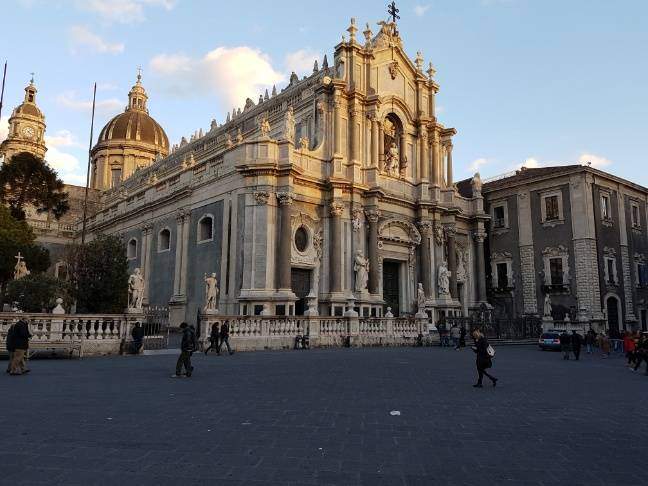
What remains at the end of my trip to Sicily is the clear awareness that epochs far distant from each other coexist here in a single time, too profound to be reduced to the mere, ephemeral flow of the present. Time in Sicily does not claim its slowness, as is often said; time claims its depth.
I had been there only once before in my life, almost exactly 25 years ago, as a teenager at the end of middle school. My parents had decided to take me to discover my roots (my mother has distant Sicilian origins). Of course, if I had been asked at the time, before starting this trip, I would have surely suggested different destinations than a place on the opposite side of the planet, of which I had only seen a few old (really old) photographs at home, of people whose names I could barely pronounce.
Well, the experience of a trip to Sicily as a teenager unraveled all its multifaceted aspects only over the years, in the form of nostalgias so profound that they could not be filled elsewhere.
Some impressions had remained static, others had blurred and generally grown vaguer in my mind. I decided to return there, alone, both to reawaken still-existing memories and to update those now obsolete. But mostly, to give a name to the invisible nostalgias that had wandered in my mind for a quarter of a century. It was well worth the effort.
Whoever wants to explore Sicily needs to face one thing that seems to have a different valence there: time. To understand it thoroughly and to experience all its facets, you must abandon the sharp distinction between past and present; not least because the present does not flow there as it does elsewhere. It simply manifests itself as the sum of each past, reflected in it.
During the journey, I was often reminded of the quote by the Sicilian writer Giuseppe Tomasi di Lampedusa from his popular novel The Leopard: "If we want everything to stay as it is, everything has to change."
This is a consideration I found everywhere in people's behavior. They seem to interpret the present, but with their roots firmly embedded in their past, their identity, and their culture.
I landed at Catania-Fontanarossa Airport. It was April, and a gentle spring warmth (gentle compared to the often sweltering heat of the summer months) flooded every corner with rubicund tones.
I had decided to divide my trip into two parts: the first to rediscover my memories, the second to (re)discover the beauty of the land (not that one part excluded the other). As mentioned, I had been there almost 25 years before. The memory existed in my mind as a map of scattered impressions, which I wanted to reconnect. And I knew exactly what the first thing to do was: abandon my time, and abandon being a tourist. In Sicily, there is a very simple way to do that: the littorina.
A couple of days earlier, I had traveled from Milan to Rome on the Frecciarossa, the high-speed train. It was one of the most comfortable experiences I have ever had on rails anywhere in the world. Well, the littorina is the exact opposite. Diesel-powered, often something like half a century old, and with a spartan interior to say the least, the feeling is of traveling on an old truck set on rails. They mostly connect small towns between major cities, and precisely from there, I wanted to dive in.
I still had in mind the magnificent seafront landscape between Catania and the province of Syracuse, like a unique 360-degree postcard: cities like Augusta, Avola, Noto. The latter is a town that encloses so many splendors of the Baroque in a single center that it can be considered a work of art in itself.
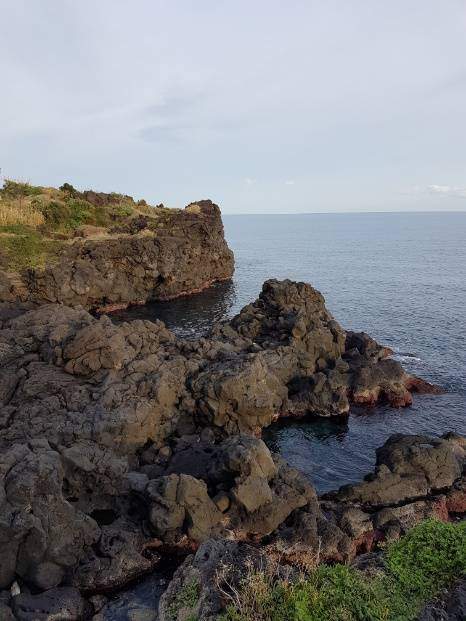
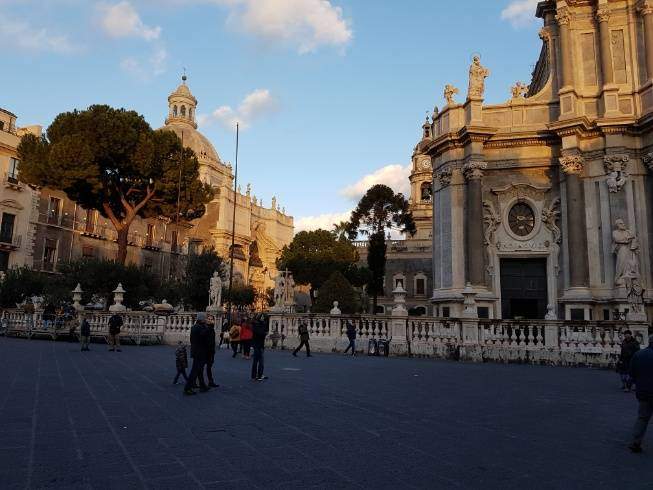
For the beginning, I had decided not to follow a specific destination; I simply wanted to discover time and align myself with it. So the next morning, I went to the station, studied destinations, and waited for the first southbound train. A little later, looking out of the window of the littorina, I saw so many splendors in a single vision that I had to borrow Goethe's quote from his Italian journey: "Do you know the land where lemon trees bloom?"
Beautiful citrus gardens lay directly next to the railroad, and the same glance caught a wilder and more unspoiled nature further on, where cacti and carob trees alternated before getting lost in the placid and intense sea just beyond. Turning my eyes to the opposite side, I glimpsed the snow-capped peak of Mount Etna. Exactly the same landscape that, even centuries before Goethe, the Holy Roman Emperor Frederick II had admired; almost a millennium and a half earlier, Archimedes; and centuries before that, Dionysius I. In between, there were also the Arabs, Aragonese, and Angevins, among others. Traces of all these influences are visible everywhere in Sicily: in architecture, in the form of palaces and castles - or their ruins anyway - in culture, and in history.
And yet, looking out of the window, I saw nature as impassive, older than anything and still dominant, stoic before everything, unchanged no matter what. A nature that leads you straight to its most archaic origin if you are willing to pause before it. While every conquest over the centuries appears, disappears, and finally remains as a mere shadow in the background. If we want everything to stay as it is, everything has to change.
The littorina slowed down. Nothing strange, I thought; after all, that’s its regular pace. But this time, it reached a small station, seemingly lost in the middle of nowhere. So I decided to get off and found myself in front of the small, old building, which I had no doubt was exactly the same station that had existed since the railroad was built there.
For a moment, I imagined my ancestors, the ones in the photographs I had seen countless times at home, departing from this very station and eventually arriving in America. Although there is no one left who can confirm or deny this to me, I am certain that they would have seen almost everything here unchanged.
I proceeded along the platform, which ended not even fifty steps further on, in front of some cacti and an essentially wild nature everywhere around, just with two old tracks crossing it. And an almost surreal silence, interrupted shortly thereafter by the engine of the train, which left the station, passed in front of me, and disappeared further on, leaving everything in silence again.
I walked back toward the station and noticed some people waiting when I had gotten off, including students with their eyes fixed on their smartphones, and a few elderly people who gave the impression that they had never held a smartphone in their hands.
Seeing the students with their heavy backpacks, I thought it was no wonder summer vacation there lasted three months, from June to September, when it was already so hot on an April morning. The only constant was the sound of crickets in the background.
One of the older men, strolling slowly back and forth, turned to me: "You never know when it arrives, and when it’s here, sometimes you don’t even know when it will start again," he said with a smile of resignation. I understood that he was referring to the train they were all evidently waiting for.
Over the years, I had learned Italian through various evening classes and always assumed that I had reached a good level. However, upon arriving in Italy, I hoped it would at least be sufficient. Had the man addressed me in Sicilian, though, all my efforts would have been in vain. Judging by my appearance - and later my response - he probably understood that I was not exactly a local.
In the early afternoon, I decided to get off at the southernmost station I could remember from my first trip: the small town of Rosolini, a little over a hundred kilometers from Catania. I reached the town center on foot, though not without effort, as the route was uphill. Like any Italian city, no matter how small, Rosolini’s most characteristic gathering places were twofold: the central piazza and the corso. Many towns share the same familiar names for these places: Garibaldi, Vittorio Emanuele, Savoia. Rosolini was no exception, with its Piazza Garibaldi and Corso Savoia.
Piazza Garibaldi is dominated by the Chiesa Madre, the main church, blending Baroque and Neoclassical styles. Standing in the middle of the piazza, I was reminded of another quaint particularity: each town seemed to have a bar devoted to one of the country’s major soccer teams. Even when not named explicitly, these bars were immediately recognizable by the colors of their signs: black and blue vertical stripes, red and black stripes, or black and white stripes. Sometimes, these bars occupied opposite sides of the piazza, as if in silent rivalry. Nearly everyone identified with one of these three teams, and on match day, locals gathered there to discuss the game. The conversations would often continue the next day, and sometimes even the day after that. In some towns, a "neutral zone" also existed, aptly named the Bar dello sport.
I strolled along the corso, which is usually the most elegant street in any Italian town, home to the more exclusive shops, bars, and restaurants. In many cities, traffic is allowed on the corso during the day, but come evening, it transforms into a pedestrian zone. Especially during summer, the corso comes alive with throngs of people, some dressed so exquisitely you’d think they were heading to a grand event.
I stopped at the Bar del corso for an ice cream. On my way out, an unexpected wave of nostalgia swept over me, tugging me toward a nearby spot. It wasn’t a conscious thought that guided me but rather a sweet, familiar scent: jasmine. Another quintessential gathering place, mostly for retirees during the day, is the giardinetti (small gardens): a combination of parks and gardens of varying sizes scattered throughout the city.
I entered the giardinetto near the corso immediately. At that pleasantly sunny afternoon hour, it was sparsely frequented: a few elderly people treating their grandchildren to ice cream, and two older men seated on a bench conversing in dialect. I couldn’t understand a single word they were saying, but judging from their animated gestures, they might have been debating profound philosophical questions. Or simply discussing how their neighbor hung out their laundry.
The scene felt worlds apart from the image of people clutching Starbucks cups, rushing from point A to point B with their minutes carefully calculated, often spent consulting their smartphones. I couldn't exclude myself from that habit either.
I took a seat on a bench to quietly observe my surroundings and let time soak into the sensations. Palm trees alternated with jasmine plants throughout the giardinetto, their fragrant blossoms filling the air. Ancient iron benches stood among hibiscus plants nestled in large terracotta pots. Whatever the world might imagine when it pictures the Mediterranean, be it villas or gardens designed to imitate its charm, this was its truest essence, its most authentic representation. Nowhere else could such fragrances, scents, and lights merge with the profound depth of time in quite the same way. Above all, the sweet, heady aroma of jasmine permeated everything.
Thinking back to my visit 25 years ago, I reflected on how such impressions might have influenced the mind of a teenager visiting in summer. Today, I know the answer: they create nostalgias that remain hidden, only to slowly unravel over the years as one matures enough to understand them fully.
In a brief exchange, a retiree suggested I take the bus back to Catania, as it would be faster than the train. I didn’t doubt his advice for a second, and I decided to follow it.
It was late afternoon by the time the bus departed. As it left town, the fading daylight cast warm, golden hues on ancient iron gates and the cracked, weathered facades of homes. I couldn’t help but wonder if some of those houses had been abandoned - until the sight of fresh plants in pots on their balconies proved me wrong.
At that moment, another memory from 25 years ago resurfaced: back then, I had borrowed a scooter (without giving much thought to whether I had a driver’s permit, let alone a helmet). During the height of summer, roughly between 6 and 8 in the evening, there is a peculiar atmosphere in the south. It’s a time when people, having just returned from the beach, begin preparing to go out for the night.
It’s hard to describe, but as I rode the scooter past houses situated directly along the street, I could see this transition happening everywhere. People leaned out from their balconies, their hair still damp from the shower. Others, already dressed more elegantly, stepped out of their front doors to converse with relatives or neighbors seated on chairs outside their homes. It’s a time of particular energy, a moment where one part of the day - the leisurely beach hours - comes to an end, and another, equally vibrant and full of promise, is about to begin. The mood seems to ripple through the entire town, almost as if everyone were synchronized in their preparations to gather later at the piazza or corso. Teenagers, perhaps, might choose to retreat to a giardinetto if they’ve met someone interesting.
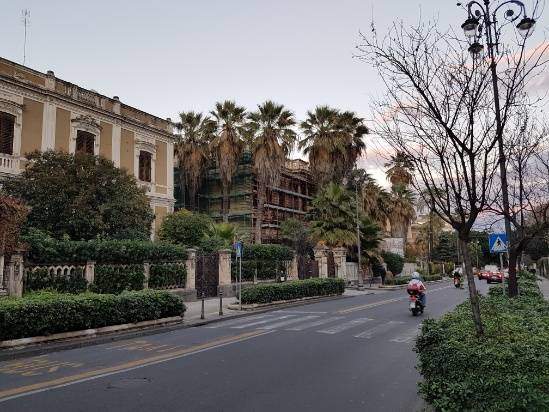
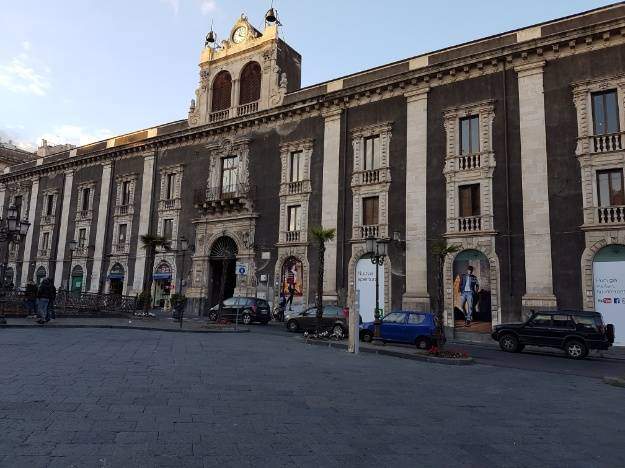
2. part: Catania
(Only for Storyexpe Residents)
• Why does "Stop" not necessarily mean "Stop"? (In fact, it doesn't mean it at all).
• Cornetto or brioche? We could stay here and discuss this for hours. But we don't have to, because I have already discovered it.
• Is it possible that in a late Baroque square Greek-Roman actors from 2,000 years ago could disturb today's inhabitants? In my opinion, yes. But judge for yourself.
• Goethe egregiously cited Sicilian lemons. Let alone what he would have said about the granita. I have thought of that.
• At the end of it all, what is a nostalgia? Whatever your answer, this will certainly be different.
